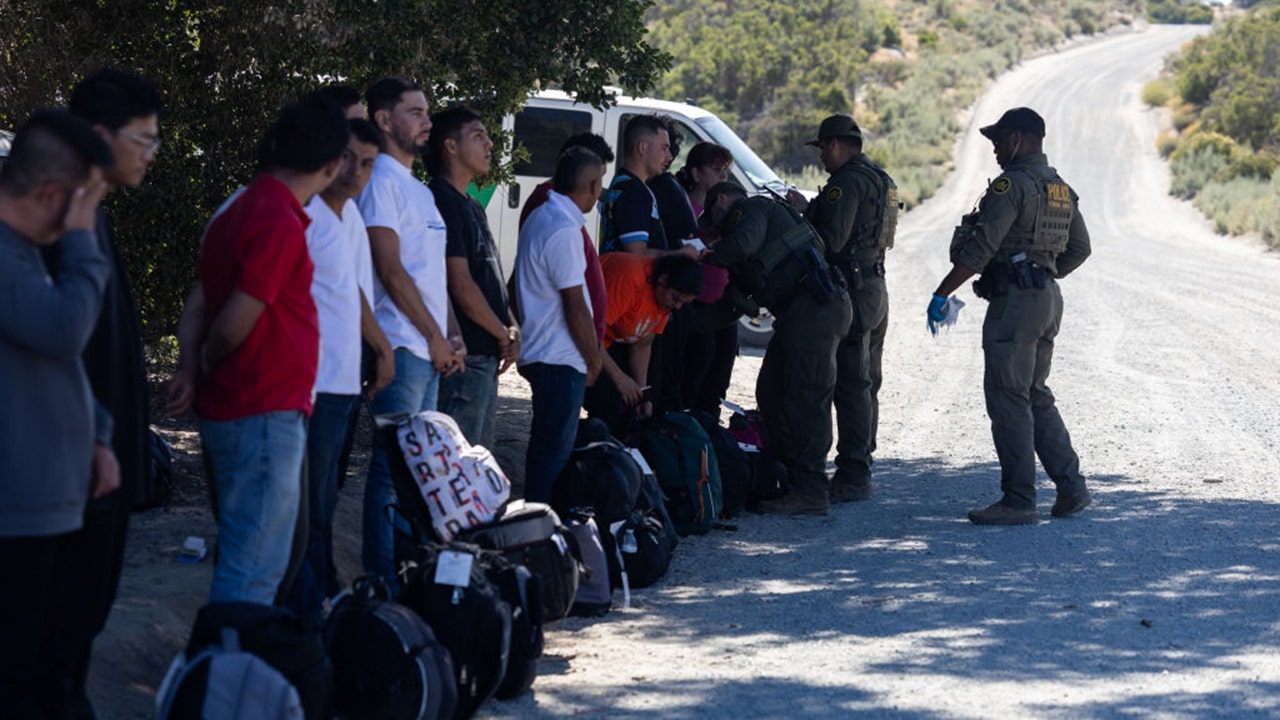Connecticut
A CT author uses a local town as setting of his first book. Including its ‘witch.’

When people think of witch trials, the place that comes to mind first is probably Salem, Mass.
Yet the first recorded execution for witchcraft in what is now New England involved Windsor in 1647, when Alse Young was hanged. Young was from Windsor but was executed in Hartford.
That piece of history is at the center of Rande Goodwin’s first book, “The Witchfinder’s Serpent.”
The book, a teen fantasy, takes place in modern day Windsor, but the main character, Nate Watson, finds out his mysterious Aunt Celia has ties to Young.
Goodwin said he became inspired to finally write his first novel during the pandemic.
“It’s something I always wanted to do, and then COVID same along and I didn’t really have a whole lot else going on,” he said.
He also always had an interest in the history of the witch trials. Connecticut this year “absolved” those accused of witchcraft nearly 400 years ago and apologized for the “miscarriage of justice” that resulted in 11 executions here in colonial times, including two men.
“It’s always interested me, Salem and all the things you see on TV, from a history perspective,” Goodwin said.
So when he learned the first recorded execution for witchcraft in what would become America involved a resident of Windsor, where he’s lived most of his life, he knew that would be the subject for his book.
The main storyline in “The Witchfinder’s Serpent” centers around Nate and his brother, who move from New York to live with their Aunt Celia in Windsor.
Aunt Celia lets them roam her entire mansion, with the exception of one room. Naturally, that leads to trouble.
“Of course that’s the room that they want to find out what’s in it,” Goodwin said.
It turns out the room is, as Goodwin described it, a “witch’s workshop.” The boys discover a bracelet, known as the Witchfinder’s Serpent.
Nate puts on the bracelet but has trouble removing it. He has to ask his Aunt Celia for help and they try to remove the bracelet before encountering its previous owner, a powerful spirit who will stop at nothing to get it back.
Along the way, Nate discovers his aunt has ties to Young and learns the history of the 1647 execution in Hartford.
Goodwin said the historical subplot focuses on what Young’s daughter dealt with after the execution.
Goodwin’s version of Young does have magical powers, something he knows might upset some people given the nature of her execution.
When Connecticut lawmakers this year, approved exonerating the people accused of witchcraft, it included Young.
Goodwin said nobody in the book actually knew about Young’s power, though, so she was wrongfully convicted even in his fictional telling. He also hopes the book brings more attention to her place in history.
“It was important to me to treat her with the utmost respect,” he said.
Goodwin also did some research, of sorts, for the modern-day portion of the story, incorporating real places and events in Windsor into the book. The Shad Derby is included, for example.
“I thought more people, especially people in town, would find it interesting,” he said.
The book will be available Sept. 12, but local readers can purchase a copy two days earlier. Goodwin will be at the Glastonbury Arts On The Green arts and crafts show on Sept. 10.
He’s scheduled to join a panel, sponsored by the River Bend Bookshop, with two other young adult authors at 12:50 p.m. Goodwin will also have books available for purchase and for signing.
“It’s a little surreal, to be honest,” Goodwin said about the upcoming launch of his first book. He’s already written a second, tentatively titled “The Witchfinder’s Bargain,” and has planned for a third in the series.
When he’s not writing, Goodwin works as an IT specialist for an insurance company in Hartford. He said his coworkers were excited to learn about his book — when he eventually told them.
“Being my first book, I didn’t tell anyone I was doing it until I was done,” he said. “Everybody says they want to write a book, but it’s a big undertaking.”
Goodwin lives with his wife, two daughters and four dogs.

Connecticut
UConn is studying trucking in CT. The issue big rig drivers face might sound familiar.

Parking spots for truckers have become tougher to find off Connecticut highways.
On some nights, on and off ramps on Interstate 91 and Interstate 95 can be dotted with trucks because of the lack of parking spaces.
Researchers at UConn’s Connecticut Transportation Safety Research Center and the Connecticut Department of Transportation are looking for ways to help. The goal is increasing safety, expanding parking availability, efficiency, and aiding truckers in complying with rest regulations.
“Truck parking has been a major focus of the FMCSA (Federal Motor Carrier Safety Administration) for the last four or five years,” said Eric Jackson, the executive director of the Connecticut Transportation Institute and the director of Connecticut Transportation Safety Research Center. “We are trying to find ways to accommodate truckers and make it as efficient as possible.”
Jackson said his organization is in the process of creating a parking inventory across the state.
“Over the last year we were visiting sites and going on Google Earth to make sure parking is up to date and seeing if there are restrooms and a place to shower,” Jackson said. “We are documenting what exists and we are finishing that.”
Darn that CT traffic jam: These major projects, traffic shifts will add to backups this summer
Jackson said the state Department of Transportation is also focused on public parking and his organization is researching private parking lots at and around Travel Centers of America off Exit 72 on I-84 in Willington.
A safety issue
In an example of the significance of trucks in moving goods in the United states, the American Trucking Association reports that the big rigs moved 11.46 billion tons of freight in 2022. The Motor Transport Association reports that “85.8% of Connecticut communities depend exclusively on trucks to move their goods.”
Trucks, as are other vehicles, are regularly part of the construction-related traffic jams seen across Connecticut, with some back ups stretching for miles and hours.
“We are looking to set up a pilot program to track in real time how many parking spots are available throughout the state,” Jackson said.
Jackson said there has been a recent switch from manual logbooks in trucker’s cabs to more efficient and electric logs that track drivers closely. Once 10 straight hours of driving has been reached, the driver must take break and pull over to avoid facing penalty, he said. In some case the rule is 11 hours of driving, according to the Federal Motor Carrier Safety Administration
“If drivers are running against hours of service and there is nowhere to park, they must stop – that’s when they start parking on off-and-on ramps on highways and that’s not safe for anyone,” he said. “It’s a major safety issue.”
Jackson said he saw firsthand around the country that there is a lack of parking. He took an RV to Kentucky and saw all spots full at rest stops and the highway ramps filed with trucks – like what is seen in Connecticut, he said..
“Just about every rest area we saw this issue,” Jackson said. “There are more trucks on the road.”
Jackson said his organization considered an app for drivers in the state but has shifted the philosophy.
“The landscape is changing rapidly,” Jackson said. “We are going to focus on how to populate the data and use it in existing apps. It doesn’t make sense to have an app just for Connecticut. We are going back to the drawing board a little bit and still in the process of seeing the best way to get the information to the truckers.”
UConn’s Connecticut Transportation Safety Research Center is working with FMCSA and the CTDOT as well as other groups.
One of the ideas is to put cameras in parking lots and detectors to see where vacant spaces are and have a count of the number of open spaces as a sign on the highway. Jackson’s organization has a request for proposal to get some pilot data about parking.
“We are looking at different technology,” Jackson said. “We want a full inventory.”
The Connecticut Transportation Institute also collects and shares crash data in the state and is currently researching any crash information involving parked trucks.
John Blair, the president of Motor Transport Association of Connecticut said this has been a federal issue over the past few years and since U.S. Secretary of Transportation Pete Buttigieg visited the state in January 2023.
“Secretary Buttigieg came to the state and spoke about the issue, and he spoke about the truck parking issue and improving infrastructure for some corridors,” said Blair, who has been the organization’s president for the last two years.
“The technology has improved over the years, but it doesn’t do much if all of the parking spaces are full,” Blair said. “If any of us are traveling on 91 or 95 you see cars parked along the entrance way and that’s not the safest place to park.”
“You have to build out the infrastructure for the rest stops,” Jacksons said. “They need to be expanded. At the federal level, the American Trucking Association has been pushing for improvement for truck parks and expansion across the country.”
Jackson, who grew up in Farmington and now lives in Hartford, said he would support technology that would improve drivers learning about spots, if it doesn’t come at too large of a cost for truckers to put it in their vehicles.
“Many may not want to invest because the margins are so tight,” Jackson said. “But I believe improvements are coming. It hasn’t trickled down from the federal level yet, but we will probably see it more over the next year and a half.”
“I hope there is a focus on safety so we can provide safe roadways for our drivers and truck drivers and have more options for parking for the trucking community,” he said.
The state Department of Transportation released the 60-page Connecticut Truck Parking Study in June 2023. It also found issues with the quantity of spaces available.
The study looked at much of what Jackson’s group is researching, including: inventory of existing truck parking in the state and analysis of identified truck parking sites; analysis of undesignated truck parking at identified truck parking sites; truck parking supply and demand assessment of key corridors; summaries of truck driver surveys from a truck parking perspective and truck parking implementation strategies.
“Almost 92 percent of the estimated truck parking demand in 2019 (i.e., 642 out of the 700 truck parking spaces needed during peak hour) is concentrated on I-95, I-84, I-91, and I-395 corridors,” the report said. “Parts of I-84, I-91, and I-395 corridors have a non-uniform supply (i.e., lack truck parking facilities once every hour of truck travel).
“The non-uniformity in truck parking supply makes it difficult for truck drivers to meet their hours of service (HOS) regulations on the state’s transportation network. At the time of this analysis, a major supply shortfall location is identified as I-84 corridor between US 7 and I-691, which needs development of new truck parking sites.”
The report said peak hours are from 6 p.m. to 6 a.m. at I-95 Darien north and southbound service plazas, I-84 eastbound in Southington and I-84 westbound in West Willington. These sites have longer term parking 4-to-8 hours or longer in duration. There is slower turnover and more parking in undesignated areas.
The sites of I-95 southbound at the North Stonington Welcome Center, Pilot Travel Center #882 and Pride Hartford Truck Stop all have 30 or more parking spaces apiece and regularly have more spots available – according to the report.
The report also said the demand for I-95 corridor segments is higher compared to the I-91 and I-395 corridors and should be prioritized for expansion around the existing truck parking sites or development of new truck parking sites.
Showers, laundry and truck washes are only present on I-95 corridors and laundry is available on I-95, I-84 and I-95, the report says, while pushing for the amenities to be more readily available.
The report states that there are 30 parking sites in the state, 20 are public and 10 are private. There are 1,226 total available parking spots for 5-axle and greater trucks in the state, it says.
The 10 private sites provide approximately 863 spots, which is 70 percent of parking spaces in the state. The 20 public parking spots provided 363 spots, the report says.
Connecticut
Manhunt underway in Connecticut after fatal stabbing at New Haven mart

New Haven police are searching for a man involved in a fatal stabbing that took place in the early morning hours on Saturday, after an altercation at a local mart turned deadly.
The incident occurred around 1 a.m., when an altercation broke out at Sam’s Mart on Whalley Ave, authorities said Saturday.
It’s unclear what led to the argument, but it reportedly escalated to the point where 47-year-old New Haven resident Travis James was stabbed.
Police said was taken to the Yale New Haven Hospital Saint Raphael Campus in critical condition and was unresponsive upon arrival.
Authorities were initially told James suffered a gunshot wound, but doctors later determined he had been stabbed.
The New Haven Police Department released a photograph on Saturday of a man they believe was involved in the incident.
Detectives are looking to speak with this person of interest regarding the homicide this morning. pic.twitter.com/VoXeWnLxq0
— New Haven Police Department (@NHPDnews) June 1, 2024
“Detectives are looking to speak with this person of interest regarding the homicide this morning,” they wrote in a post to X. Police also asked that anyone who may have witnessed the incident or who has any information, reach out to help with their investigation.
Connecticut
Driver confesses to taking fentanyl, cocaine before fatal hit-and-run of CT state trooper

The driver accused of fatally striking Connecticut Trooper First Class Aaron Pelletier, and then fleeing the scene, has been arrested.
Alex Oyola-Sanchez, 44, is facing a slew of charges in connection with the deadly hit-and-run, including manslaughter in the second degree, operating under the influence of drugs or alcohol and evading responsibility death.
According to an arrest report obtained by NBC Connecticut, Oyola-Sanchez confessed to taking fentanyl, cocaine and what he believed was Klonopin before the deadly crash, which occurred Thursday afternoon.
Pelletier had stopped a car on Interstate 84 East in Southington and was standing outside of his cruiser when Oyola-Sanchez’s pickup truck swerved onto the shoulder. Authorities said his vehicle initially struck the police cruiser, and then Pelletier, who’d been talking to the driver he’d just pulled over.
The highway was closed for hours as police investigated the incident and tracked down the suspect.
Oyola-Sanchez continued driving, stopping only after his tire blew on I-84 East in Farmington. He was taken into custody shortly thereafter, and it’s far from the first time he has been arrested.
In 2007, Oyola-Sanchez was convicted of third degree murder in Puerto Rico and sentenced to serve six years in prison, CT Insider reported. It’s unclear how long he actually spent behind bars. The following year, he was charged with three counts of attempted homicide.
Pelletier leaves behind his wife, Dominique, and two young sons, Troy and Zachary.
-

 News1 week ago
News1 week agoRead the I.C.J. Ruling on Israel’s Rafah Offensive
-

 News1 week ago
News1 week agoVideo: Protesters Take Over U.C.L.A. Building
-

 World1 week ago
World1 week agoHoping to pave pathway to peace, Norway to recognise Palestinian statehood
-

 News1 week ago
News1 week agoLegendary U.S. World War II submarine located 3,000 feet underwater off the Philippines
-

 World1 week ago
World1 week agoFamilies of Uvalde school shooting victims sue Microsoft, Meta and gunmaker
-

 Politics1 week ago
Politics1 week agoHunter Biden attends pre-trial hearing in Delaware court on federal gun charges
-

 Politics1 week ago
Politics1 week agoDefense Secretary Lloyd Austin to undergo nonsurgical procedure, Deputy Kathleen Hicks will assume control
-

 News1 week ago
News1 week agoHere are three possible outcomes in the Trump hush money trial : Consider This from NPR



















